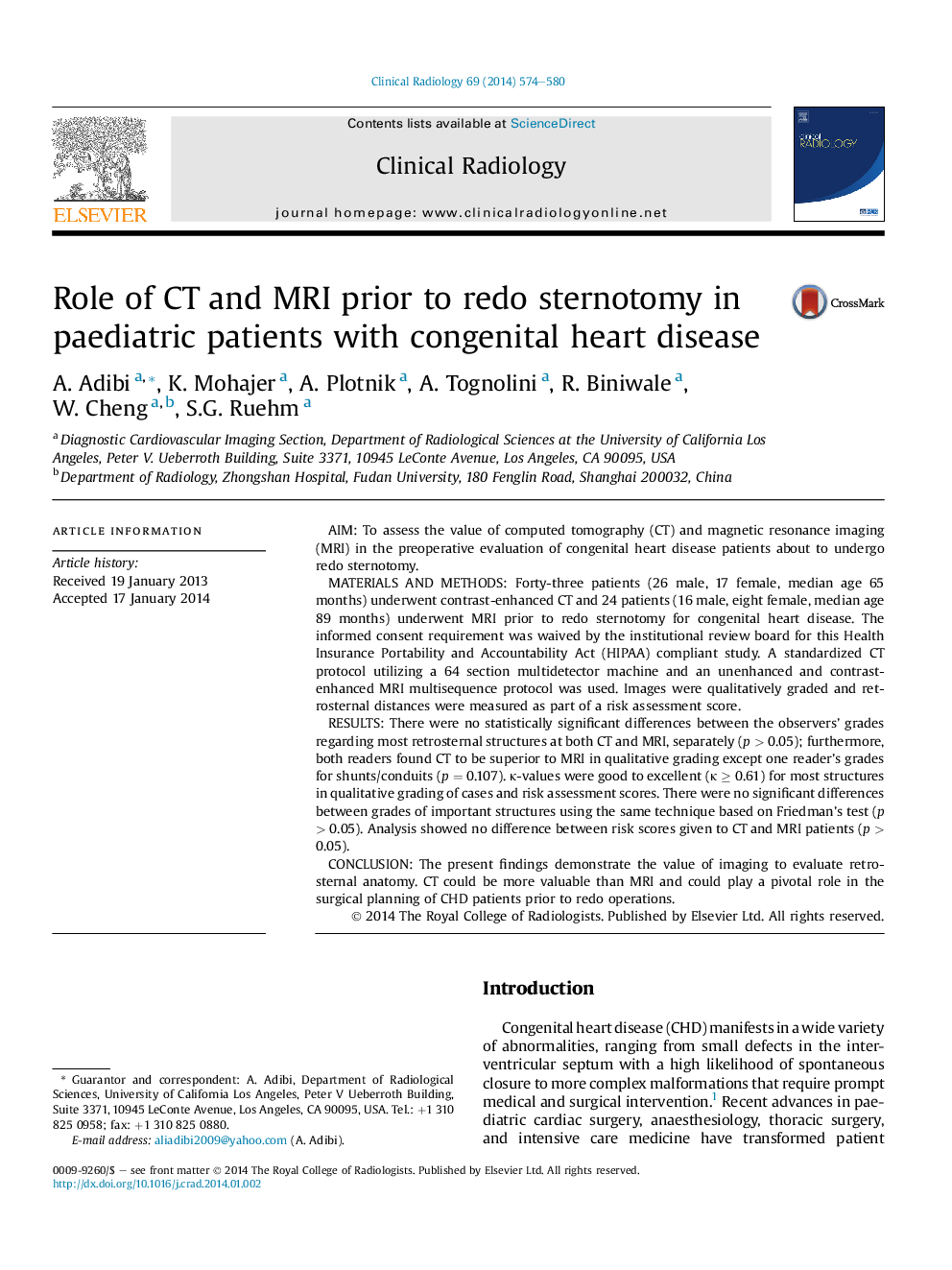| Article ID | Journal | Published Year | Pages | File Type |
|---|---|---|---|---|
| 3981738 | Clinical Radiology | 2014 | 7 Pages |
•Cardiac CT is valuable before redo sternotomy in CHD patients.•CT effectively evaluates major retrosternal structures before redo surgery.•In qualitative image grading, CT was superior to cardiac MRI.•CT may be advocated in cases with suboptimal initial cardiac MRI.
AimTo assess the value of computed tomography (CT) and magnetic resonance imaging (MRI) in the preoperative evaluation of congenital heart disease patients about to undergo redo sternotomy.Materials and methodsForty-three patients (26 male, 17 female, median age 65 months) underwent contrast-enhanced CT and 24 patients (16 male, eight female, median age 89 months) underwent MRI prior to redo sternotomy for congenital heart disease. The informed consent requirement was waived by the institutional review board for this Health Insurance Portability and Accountability Act (HIPAA) compliant study. A standardized CT protocol utilizing a 64 section multidetector machine and an unenhanced and contrast-enhanced MRI multisequence protocol was used. Images were qualitatively graded and retrosternal distances were measured as part of a risk assessment score.ResultsThere were no statistically significant differences between the observers' grades regarding most retrosternal structures at both CT and MRI, separately (p > 0.05); furthermore, both readers found CT to be superior to MRI in qualitative grading except one reader's grades for shunts/conduits (p = 0.107). κ-values were good to excellent (κ ≥ 0.61) for most structures in qualitative grading of cases and risk assessment scores. There were no significant differences between grades of important structures using the same technique based on Friedman's test (p > 0.05). Analysis showed no difference between risk scores given to CT and MRI patients (p > 0.05).ConclusionThe present findings demonstrate the value of imaging to evaluate retrosternal anatomy. CT could be more valuable than MRI and could play a pivotal role in the surgical planning of CHD patients prior to redo operations.
